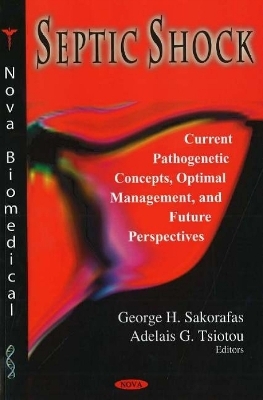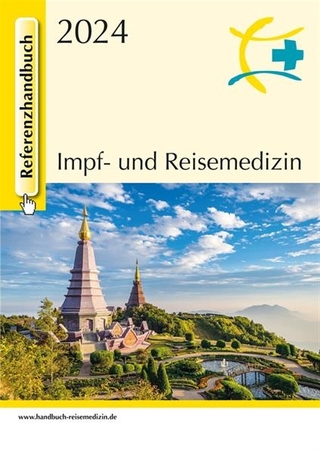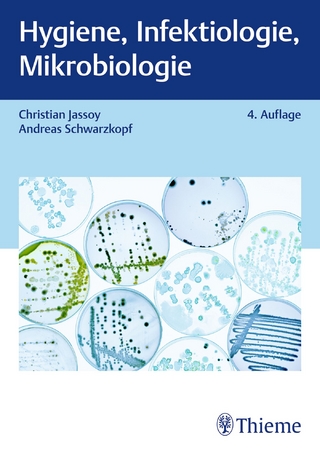
Septic Shock
Current Pathogenetic Concepts, Optimal Management & Future Perspectives
Seiten
2006
Nova Science Publishers Inc (Verlag)
978-1-59454-168-1 (ISBN)
Nova Science Publishers Inc (Verlag)
978-1-59454-168-1 (ISBN)
Sepsis is one of the most frequent complications in the surgical patient and one of the leading causes of mortality in intensive care units. This monograph aims to summarise the contemporary data regarding epidemiology, pathogenesis, and optimal management of septic shock, with an emphasis on the role of source control in sepsis.
Sepsis is one of the most frequent complications in the surgical patient and one of the leading causes of mortality in intensive care units. During the past two decades, a great deal has been learned about surgical bacteriology, antibiotic prophylaxis, supportive management, and the host response to microbial invasion. Sepsis can be caused by infection with gram-negative bacteria, gram-positive bacteria, fungi (and particularly Candida), or viruses. Sepsis may also occur in the absence of detectable bacterial invasion, and in these cases, microbial toxins, particularly gram-negative bacterial endotoxin (lipopolysaccharide, LPS), and endogenous cytokine production have been implicated as initiators and mediators. Although activation of the immune system during microbial invasion is generally protective, septic shock develops in a significant number of patients as a consequence of a poorly regulated immune response to the offending organism. Sepsis can be presented with a spectrum of severity. Septic shock represents the most severe form of host response to infection. The aim of this monograph is to summarise the currently available data regarding epidemiology, pathogenesis, and optimal management of septic shock, with a particular emphasis on the role of source control in sepsis. Emerging therapies for septic shock are also discussed.
Sepsis is one of the most frequent complications in the surgical patient and one of the leading causes of mortality in intensive care units. During the past two decades, a great deal has been learned about surgical bacteriology, antibiotic prophylaxis, supportive management, and the host response to microbial invasion. Sepsis can be caused by infection with gram-negative bacteria, gram-positive bacteria, fungi (and particularly Candida), or viruses. Sepsis may also occur in the absence of detectable bacterial invasion, and in these cases, microbial toxins, particularly gram-negative bacterial endotoxin (lipopolysaccharide, LPS), and endogenous cytokine production have been implicated as initiators and mediators. Although activation of the immune system during microbial invasion is generally protective, septic shock develops in a significant number of patients as a consequence of a poorly regulated immune response to the offending organism. Sepsis can be presented with a spectrum of severity. Septic shock represents the most severe form of host response to infection. The aim of this monograph is to summarise the currently available data regarding epidemiology, pathogenesis, and optimal management of septic shock, with a particular emphasis on the role of source control in sepsis. Emerging therapies for septic shock are also discussed.
Preface; Epidemiology; Pathophysiology of Septic Shock; Diagnostic Evaluation of the Septic Patient; Management of Septic Shock; Monitoring of Shock; Prognosis and Staging for Sepsis; Prevention; Conclusions and Recommendations; References; Index.
| Erscheint lt. Verlag | 3.2.2006 |
|---|---|
| Zusatzinfo | Illustrations |
| Verlagsort | New York |
| Sprache | englisch |
| Maße | 230 x 155 mm |
| Gewicht | 241 g |
| Themenwelt | Medizin / Pharmazie ► Medizinische Fachgebiete ► Mikrobiologie / Infektologie / Reisemedizin |
| ISBN-10 | 1-59454-168-X / 159454168X |
| ISBN-13 | 978-1-59454-168-1 / 9781594541681 |
| Zustand | Neuware |
| Haben Sie eine Frage zum Produkt? |
Mehr entdecken
aus dem Bereich
aus dem Bereich
und Erste Hilfe an Bord
Buch | Softcover (2024)
MWV Medizinisch Wissenschaftliche Verlagsgesellschaft
39,95 €


